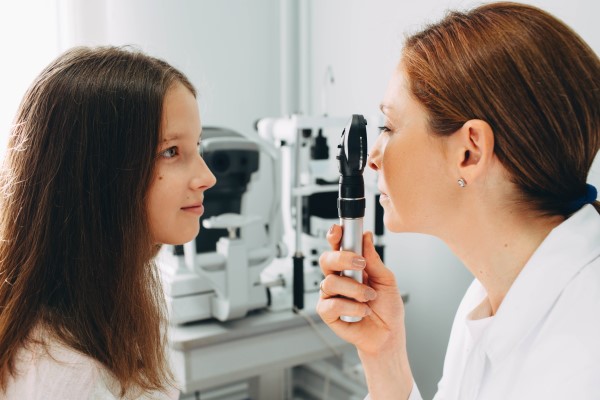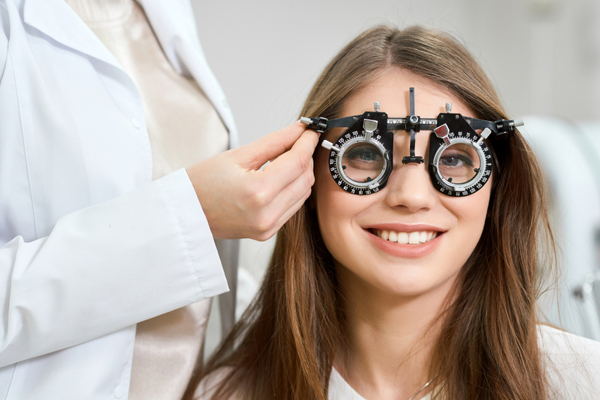Optometry: What to Expect During Your Eye Exam

An optometry exam involves a thorough evaluation of the eyes to check for any signs of ocular disease and assess any vision changes. Treatment for eye diseases can be more effective if the symptoms are caught early, and correcting vision changes with glasses or contact lenses can improve safety and quality of life. Therefore, it is important to have eye exams on a regular basis.
Patients may not know what to expect if they have not had an eye exam lately. The following is an overview of what may happen during an optometry exam. All tests are not performed at every visit, but people can expect to have most or all of these tests performed over the course of a lifetime.
Normal results
A normal eye exam shows no evidence of any disease, such as macular degeneration, cataract or glaucoma. An eye doctor will check that the external structures of the eye, such as the sclera (white part) and iris (colored part) appear normal. The ability to distinguish between various colors is a normal result. An eye exam may include a test of the peripheral vision to assess if the patient can see things off to the side.
One of the most important assessments during an eye exam is visual acuity, i.e., how sharp or clear objects appear. Nearsightedness occurs when people are able to clearly see items that are close up but have difficulty seeing objects that are far away. On the other hand, farsightedness allows people to see things at a distance, but objects that are nearer may appear blurry. Corrective lenses, such as glasses or contacts, are often used to compensate for abnormal visual acuity.
Common tests
Two types of tests are typically performed at an optometry visit. There are tests to assess for disease and tests to gauge vision.
Tests to assess for disease
A glaucoma test involves measuring the pressure inside the eye by blowing a puff of air onto it. A device called a tonometer then assesses the eye's resistance to the puff of air. Elevated pressure is a symptom that may indicate glaucoma.
A slit lamp exam allows the eye doctor to magnify the structures of the eye to look for abnormalities that may only be present on the microscopic level. It allows the eye doctor to perform a thorough examination of the structures at the front and back of the eye.
Tests to gauge vision
A visual acuity test involves identifying letters that become smaller to represent objects at a greater distance. If visual acuity is not normal, the eye doctor may perform refraction and retinoscopy tests. These require the patient to look through a device called a phoropter that is equipped with different lenses. The doctor switches to different lenses to determine which help the patient see better.
A visual field test gauges peripheral vision. It involves trying to perceive flashes of light around the face while looking straight ahead. A color blindness test involves a pattern of colored dots. People who can distinguish colors perceive certain shapes within the patterns.
Conclusion
Many eye conditions are degenerative, meaning that the associated problems get worse over time. Therefore, it may be necessary to have optometry exams more often as you get older.
Are you considering optometry in the Mt Vernon area? Get more information at https://brighteyesmv.com.
Check out what others are saying about our services on Yelp: Read our Yelp reviews.
Recent Posts
Emergency eye care is needed if you find yourself dealing with a problem with your eye that causes pain or affects your vision. Failing to treat eye injuries as soon as they are detected can lead to permanent consequences, like reduced vision or blindness. Common eye injuries that require emergency eye care include: Exposure to…
Looking for more information on eye protection? An ophthalmologist knows everything there is to know about protecting the eyes. While there are a few different types of eye care professionals, ophthalmologists are eye care professionals who have undergone additional years of education and training so they can offer their patients both medical and surgical eye…
Controlling myopia at an early age can slow down its progression. This can help prevent yearly upgrades for stronger glasses. Your optometrist can help by offering various treatments. If you want to find out how your optometrist can help control myopia, here are the details.Optometrists use atropine eye drops to achieve short-term myopia control results.…
Another word for an itchy eye is ocular pruritis. It is a common health situation in many people. Itchiness in your eyes is more than enough reason to see an optometrist. Receiving prompt treatment is important in receiving prompt relief. If you want to know what causes an itchy eye and the treatments for it,…



